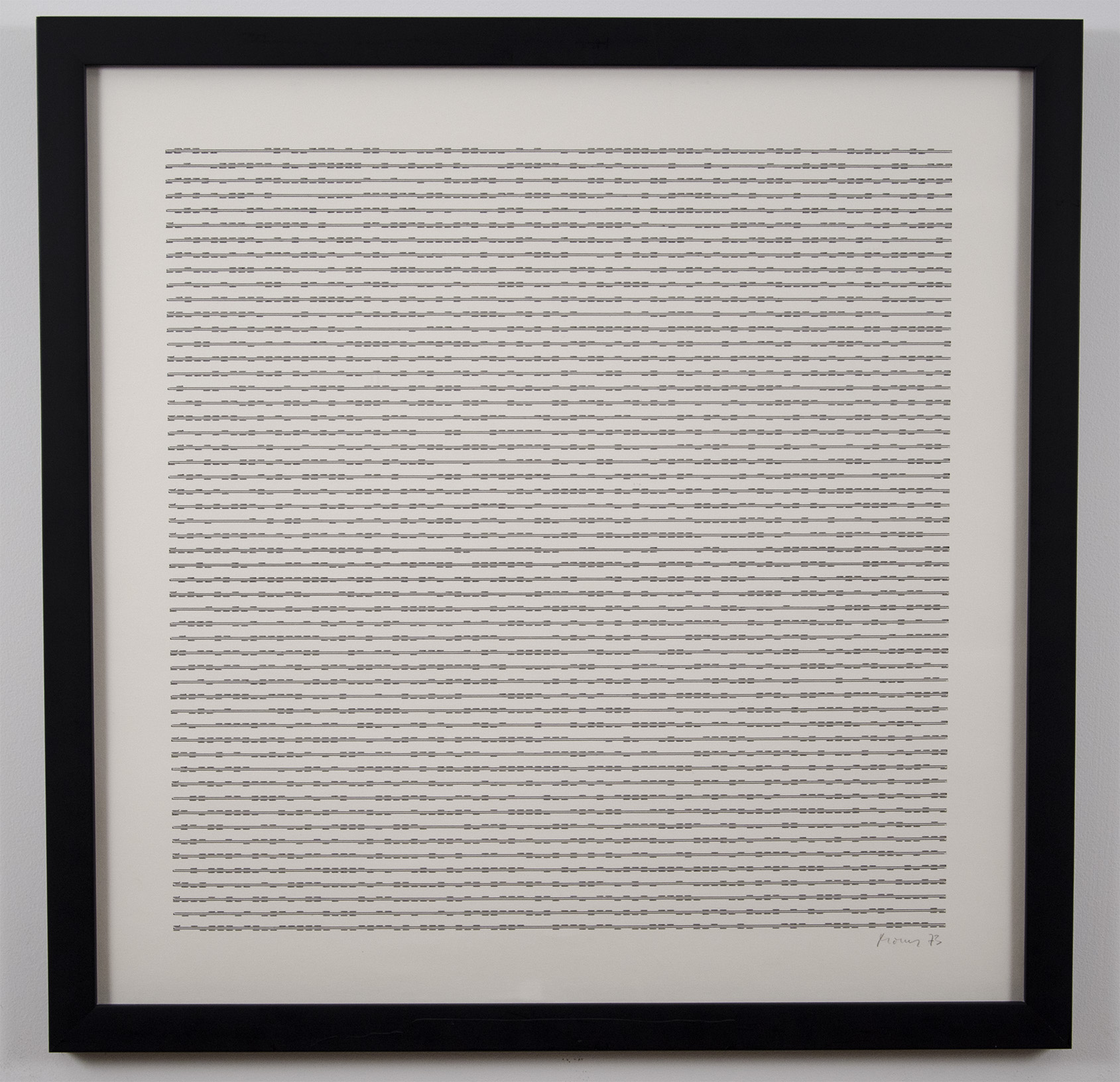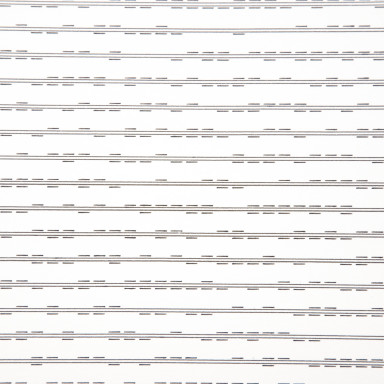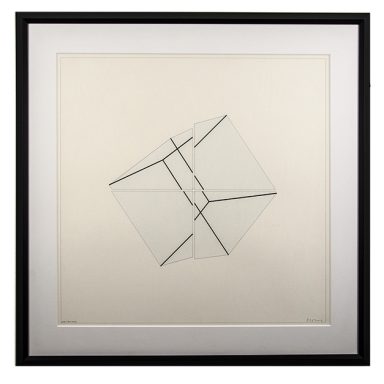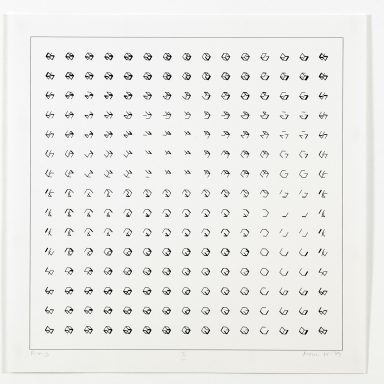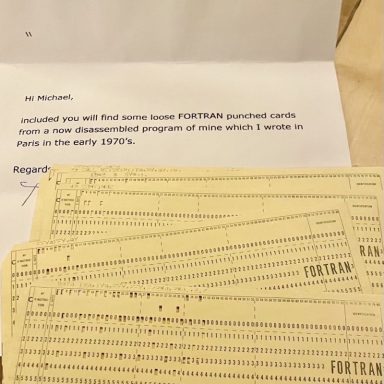Basic Information
Title: P-148 Inschrift (Inscription)
Artist(s):
Manfred Mohr
Date Created: 1973
Framed Dimensions: 26 x 26 in.
Unframed Dimensions: 19.5 x 19.5 in.
Medium: Plotter drawing on paper
Inventory ID: Mohr-1973-01
Description
signed and dated lower right
The drawing is constructed from a series of 2 horizontal solid lines spaced a distance apart. Between each pair of lines, a third line is broken up into short equal length pieces and a random sequence of 0’s and 1’s decides the position of each piece.
For each short line if it’s random number is 1, it is drawn at the bottom of the top line and if its random number is 0, it is drawn at the top of the bottom line.
As an aesthetic decision, not to start or end with a solid horizontal line, the surface is treated as a torus. Thus the top and bottom of the drawing have complementary short lines (as described above). The original version of the program, also from 1973, did not have this – i.e. the surface was treated as a flat plane.

